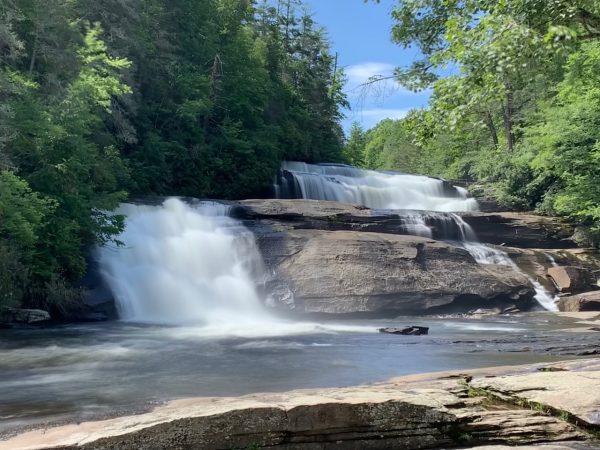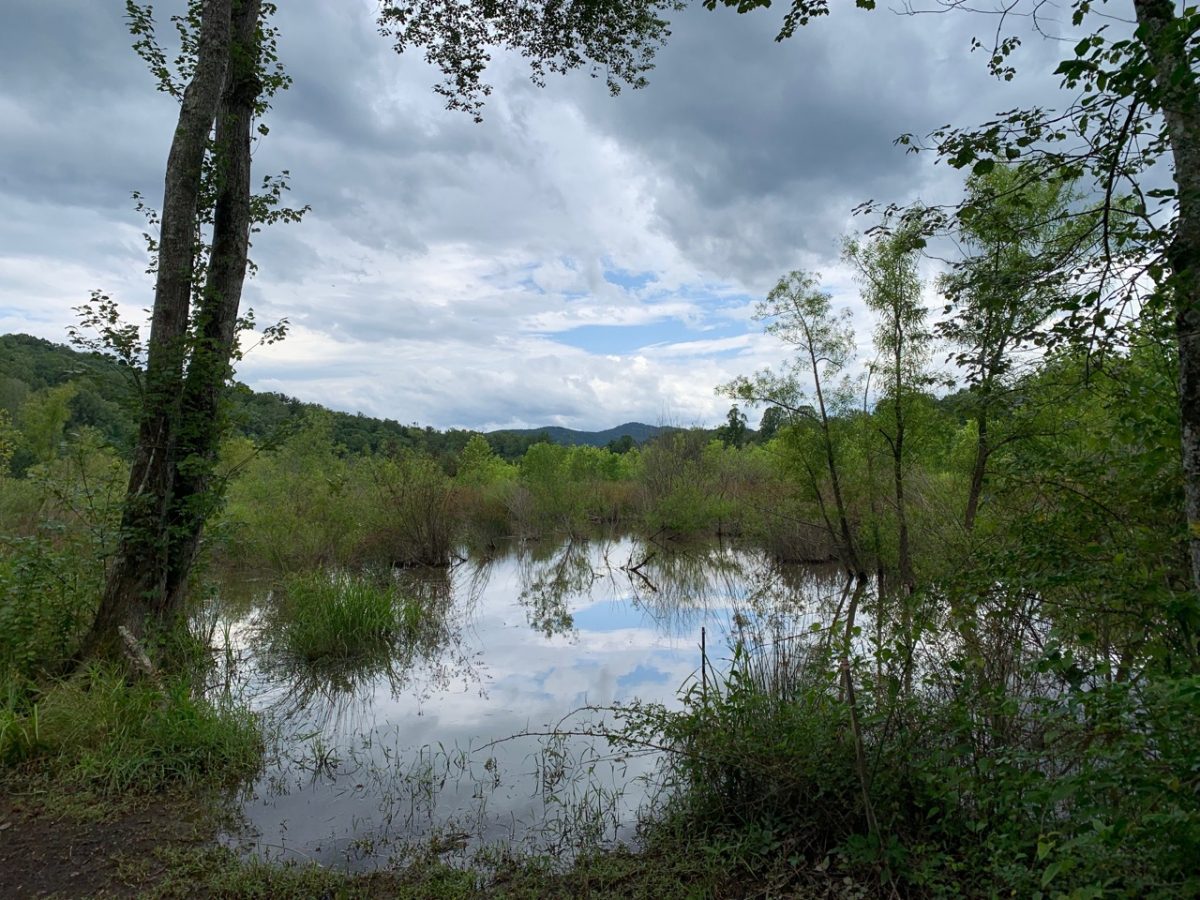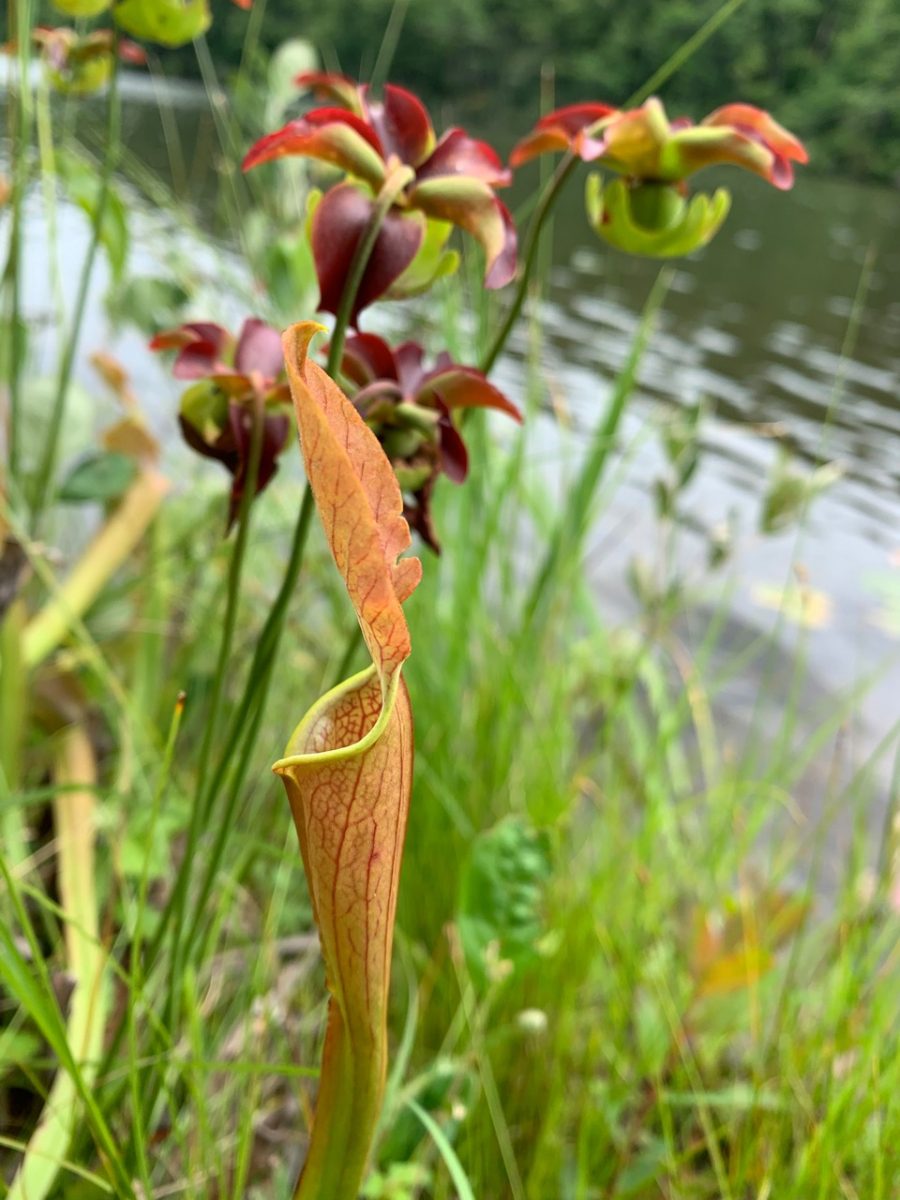Rare plant communities abound in some unusual North Carolina spots

When you think of rare species, your mind might turn to majestic tigers, ferocious grizzly bears or majestic elephants.
But how often do you think of bogs, sandbars and the slimy rocks coated in spray? A recent Natural Heritage Program Rare Plant and Natural Communities Workshop in Hendersonville highlighted the
importance of these unusual ecosystems for many of our region’s rare plants.

Appalachian bogs, an important environment for many uncommon plants, have been threatened by drainage and development proejcts. Photo: Crystal Cockman.
Bogs are saturated by very acidic water and therefore differ from many other wetland communities. The Nature Conservancy estimates that only about 500 acres of bog habitat are left in North
Carolina.
“Many bogs have been lost to draining, ditching, and development,” the group notes. Those that remain are home to rare species, and have been the subject of extensive preservation efforts. This recent workshop was put on by the North Carolina Association of Environmental Professionals in partnership with NC Natural Heritage Program.
A natural community is defined as “a distinct and reoccurring assemblage of populations of plants, animals, bacteria, and fungi naturally associated with each other and their physical environment,”
according to the Classification of “Natural Communities of North Carolina” by Mike Schafale, who was one of our leaders for this trip.
The first natural community we stopped to see was a Swamp Forest Bog Complex in DuPont State Recreational Forest. Here we saw Swamp Pink, a federally protected plant. Although it was past bloom, we still were able to see the spent bloom and the vegetation. We also found climbing fern and pink lady slipper at this site.
The second place we stopped was also in DuPont State Forest: A rocky bar and shore community. This is an area where the river floods periodically to disturb the environment such that no big trees
are found here. One form of this community is the twisted sedge variety, of which we saw some here. We also saw an uncommon species of mountain hydrangea, species radiata, (which is uncommon in our state), along the shore.

We then ventured to Triple Falls, a beautiful large waterfall, to see an example of a spray cliff community. Here we found a variety of unique plants adapted to living in the mist beside a waterfall. One of these was a species known as Brook saxifrage or Allegheny brookfoam. It is at high risk as a result of sedimentation and other pollutants and from trampling. Schafale pointed out that because spray cliff communities have flowing water year round, the water keeps the temperature steady and they don’t freeze in the winter or get too hot in the summer.
As a result, some species of tropical mosses and ferns can be found there. Next, we visited bogs: One example was a French Broad Valley Bog. This is a place where mountain sweet pitcher plant, another federally protected species, grows. We also visited two bog sites owned by the state Plant Conservation Program. These are not open to the public except through work days organized by the Friends of Plant Conservation
(ncplantfriends.org). An additional bog site we visited is owned by Conserving Carolina, a mountain land trust. These sites are home to a federally protected plant known as bunched arrowhead.
One of the preserves is home to a variety of other neat plants, including bog jack-in-the-pulpit, bog manna grass, and littleleaf meadow-rue. Unfortunately, this bog also has an invasive species, reed
canary grass, that is prevalent in the field adjacent the bog. PCP leads ongoing efforts to rid the area of this invasive plant. These bogs in this part of the mountains are home to a number of species that are more often found in the coastal plain. We spotted poison sumac, which is classically found in the Sandhills.
But many of the rare species in these bogs are in danger of being shaded in by surrounding vegetation. We discussed the paradox of this fact. The bog plants do not readily move into new sites. Where there is evidence of the age of bogs, they are thousands of years old. Why should they become overgrown by native woody plants in just a few decades after persisting for so long? One theory is that there was once a natural disturbance that kept them open, something that is now missing. One possibility for this would be beaver ponds. Current beaver ponds do not create new bogs, but bogs that are flooded by beaver ponds are able to recover when the beavers move on.
Another theory is that bog vegetation once was able to compete better with woody species and can’t anymore because of something different in the environment. There are lots of stressors, including nutrient addition from acid rain, sediment in runoff, altered hydrology in nearby streams, and invasive plants, that threaten bogs. Grazing of livestock on most bogs in the past may also have disturbed them in a way that makes them less able to maintain themselves.
Crystal Cockman is the land preservation director at Three Rivers Land Trust